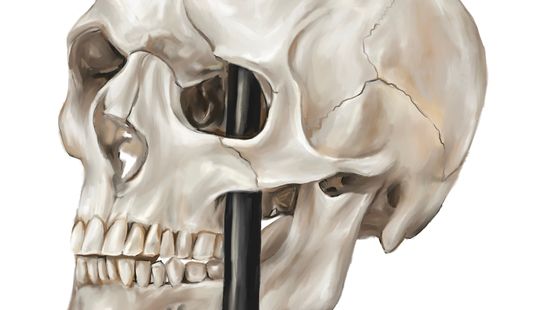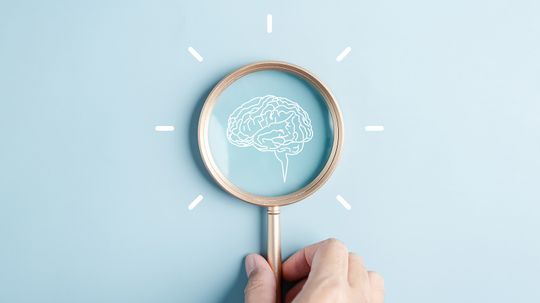Life Science
From the smallest microbe to the largest mammal, Life Science explores the origins, evolution and expansion of life in all its forms. Explore a wide range of topics from biology to genetics and evolution.

Central Heterochromia: When to Worry About Eye Color

10 Types of Noses to Spot in a Crowd

3 Major Types of Mushrooms: Edible, Wild and Poisonous

3 Types of Trees You'll Find All Over the Planet

A Corpse Flower Can Grow Over 12 Feet (3.7 Meters) Tall

Indica vs. Sativa: How to Distinguish Between Cannabis Plants

In Vivo vs. In Vitro Trials (and Why Combining Both Is Best)

Hypertonic vs. Hypotonic Solutions: Differences and Uses

Your Phone Is a Germ Factory, So Stop Taking It to the Toilet

Neanderthal vs. Homo Sapien: Separate Species With Different Fates

Howstuffworks Interviews: Extinction Level Events with Annalee Newitz

What will the Earth look like in 50,000 years?

Is a Woolly Mammoth Clone Even Possible?

The Most Common Hair Color Isn't Blonde

What Is the Most Common Eye Color? Over 70% of People Have It

9 Types of Intelligence: The Many Ways to Expand Your Mind

Phineas Gage and the Birth of Modern Neuroscience

Call of the Void: A Counterintuitive Form of Self-preservation
Learn More
For years, intelligence was measured largely by IQ tests and academic performance. But Harvard psychologist Howard Gardner challenged that view with his theory of multiple intelligences, arguing that intelligence is not a single ability, but a set of diverse capacities.
In scientific research, knowing the difference between in vivo vs. in vitro methods is essential for interpreting results and designing new experiments. These two approaches help researchers understand complex biological phenomena and advance medical knowledge in very different ways.
Ever looked closely into someone’s eyes and noticed a vibrant ring of color encircling the pupil, distinct from the rest of the iris? That eye-catching trait is called central heterochromia, and it's more common than you might think.
Advertisement
In the annals of neuroscience, few names are as memorable as Phineas Gage. His story remains a foundational example for both medical and psychology students, bridging medicine, psychology and history.
Take a glance around any crowd and you’ll notice one thing: Noses come in all kinds of shapes and sizes. From sleek and straight to curved and prominent, the many types of noses play a big role in defining our unique facial features.
Trees are one of nature’s most incredible designs, providing oxygen, shelter and even maple syrup! From towering evergreens to small flowering plants, the diversity of trees is truly mind-blowing.
By Talon Homer
Some types of mushrooms are delicious and nutritious, while others are deadly and should never be eaten. Learning how to tell them apart is essential for both food lovers and foragers; knowing the difference between edible mushrooms and poisonous mushrooms can literally be a matter of life and death.
Advertisement
Also known as titan arum or Amorphophallus titanum, the corpse flower is known for its rare blooms. This unique plant sometimes takes seven to 10 years before reaching full bloom. When it finally does, plant enthusiasts rush to see this extraordinary occurrence up close.
By Ada Tseng
The woolly mammoth: an iconic extinct species that once roamed the vast arctic tundra during the last ice age. These colossal creatures disappeared thousands of years ago, but now, scientists are working to bring them back.
By Zach Taras
Neanderthals (Homo neanderthalensis) and humans (Homo sapiens) are two distinct species within the genus Homo. Neanderthals lived in Eurasia until about 40,000 years ago, alongside ancient humans.
By Ada Tseng
Content warning: This article discusses self-harm. If you or someone you know needs help, dial 988 or text SAVE to 741741.
By Ada Tseng
Advertisement
According to the National Institute of Mental Health and the American Psychiatric Association, more than 10 million adults in the United States are living with phobias or similar mental disorders.
By Mitch Ryan
North Node reveals your soul’s purpose and destiny. Learn how this astrological point shapes your growth, karmic lessons, and life’s ultimate path.
By HowStuffWorks
A massive crossover of cultures and ethnicities often increases genetic variability as children inherit dominant traits from their parents. Each facial feature, skin color, and trait tells a story of people's origins.
By Mitch Ryan
Suspect infidelity? Discover key signs he is cheating, from secretive behavior to emotional distance. Learn the red flags and what to do next.
By HowStuffWorks
Advertisement
Eye contact helps build trust and communication whether in business, friendships or romantic pursuits. Its importance in human socialization means that we're more likely to take note of eye color and wonder, "What is the most common eye color?"
By Talon Homer
Where does fear come from? American psychologist John Watson wanted to find out — so, in the name of science, he tried to instill specific new fears into a baby boy he called Albert.
The natural world is a finely-tuned balance of biotic (living) and abiotic (nonliving) components that shape our environments. Various biotic factors directly affect processes like population growth, plant growth and nutrient cycling.
By Ada Tseng
Stanley Milgram's experiment was a controversial test of human psychology that shed light on the limitations of free will and obedience to authority.
By Mitch Ryan
Advertisement
Discover what it means to be a Manifesting Generator in Human Design. Learn about their traits, energy, and success strategies for thriving in life and relationships.
By HowStuffWorks
Have you ever wondered what the largest living organism on Earth is? Well, you might be surprised to learn that it's not a giant blue whale or a sequoia tree; it's a fungus!
By Mack Hayden
Psychologists who study the human personality often refer to the Big Five personality traits, a model that separates general characteristics into five categories: openness, conscientiousness, extraversion, agreeableness and Neuroticism. This psychological model is also known by the acronyms, OCEAN and CANOE.
By Ada Tseng
We're about to dive into the world of parasitology, taking a close look at one of the most common parasitic worms infecting humans: Ascaris lumbricoides. This large roundworm is responsible for a type of intestinal nematode infection that affects millions of people worldwide, especially in areas with poor sanitation.
By Mack Hayden
Advertisement
If you're studying genetics, molecular biology or a related field, odds are good that you will need to learn how to read a codon chart (aka codon table) to better understand the genetic code.
By Marie Look
Understanding the major differences between indica vs. sativa strains of marijuana is important for cannabis use due to the different effects they incur on the human body and mind. Although both the indica strain and sativa strain can have medical benefits, they are used for different purposes.
By Karina Ryan
























